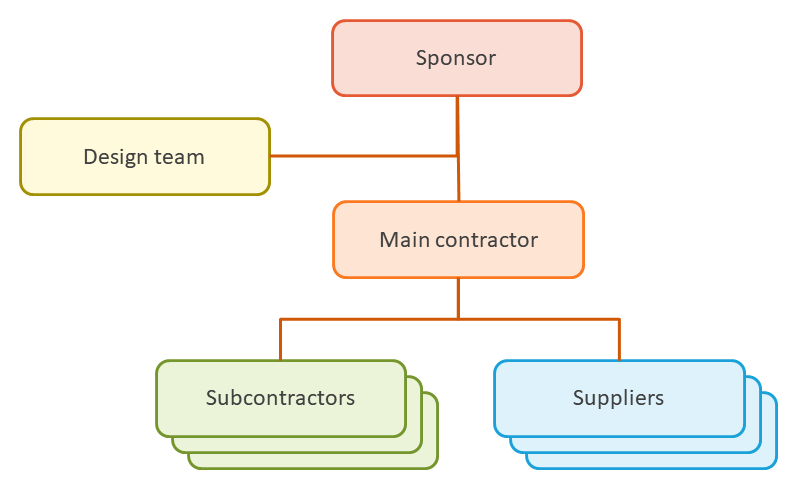Contractual relationship
Contractual relationship is the relationship between two or more parties to a contract. Created on the basis of a legal act, agreeing on mutually agreed terms and conditions. Inextricably linked with contract law, defining the rights and obligations of the parties to the legal relationship.
Contents
- 1 Compnents of a contractual relationship
- 2 Example of Contractual relationship
- 3 When to use Contractual relationship
- 4 Types of Contractual relationship
- 5 Steps of Contractual relationship
- 6 Entering into contractual relationship
- 7 End of contractual relationship
- 8 Breach of contract and contractual relationship
- 9 Importance of contractual relationship
- 10 Advantages of Contractual relationship
- 11 Limitations of Contractual relationship
- 12 Other approaches related to Contractual relationship
- 13 Footnotes
- 14 References
Compnents of a contractual relationship
Here are some key components of a contractual relationship:
- Offer: An offer is the first step in creating a contract. It is a promise made by one party to another.
- Acceptance: The offer must be accepted in order to create a valid contract. Acceptance must be made without any changes or conditions.
- Consideration: Consideration is the exchange of something of value between the parties. This can be money, services, or goods.
- Capacity: The parties must have the legal capacity to enter into a contract. This means they must be of legal age and have the mental capacity to understand the terms of the contract.
- Legality: The contract must be legal and not violate any laws.
These are special legal events occurring in the business relations in order to invite to undertake a commitment and then to accept it. However, it is important that all these activities are expressed in an understandable and unambiguous way so that the legitimacy of the relationship cannot be called into question at a later stage.

Fig.1. Example of contractual relationships - construction project
Example of Contractual relationship
An example of a contractual relationship is a landlord and tenant agreement. In this type of contract, the landlord offers the tenant the use of their property in exchange for payment of rent. The tenant must accept the offer and agree to the terms of the agreement, provide consideration in the form of rent, have the capacity to enter into the agreement, and make sure it is legal.
In summary, a landlord and tenant agreement is an example of a contractual relationship. The landlord offers the tenant the use of their property in exchange for payment of rent, and the tenant must accept the offer, provide consideration, have the capacity to enter into the agreement, and make sure it is legal.
When to use Contractual relationship
Contractual relationships are used when parties wish to enter into a formal agreement with one another. This can be used for employment, purchasing of goods and services, or for any other agreement where expectations need to be met on both sides. The use of a contract helps to protect the rights of all parties and ensure that the terms of the agreement are clear and legally binding. This helps to avoid disputes and provide clarity of expectations. In summary, contractual relationships are used when parties wish to enter into a formal agreement and have clear expectations of each other.
Types of Contractual relationship
There are several types of contractual relationships. They vary depending on the nature of the agreement and the parties involved. Here are some of the most common contractual relationships:
- Bilateral Contract: A bilateral contract is an agreement between two parties. It is legally binding and both parties must agree to fulfill their part of the agreement.
- Unilateral Contract: A unilateral contract is an agreement between one party and another. It is legally binding and only one party must agree to fulfill their part of the agreement.
- Express Contract: An express contract is a contract that is written out and includes all the terms and conditions of the agreement.
- Implied Contract: An implied contract is a contract that is not written out but is implied through the actions of the parties.
- Void Contract: A void contract is a contract that is not legally binding because one or more of the parties involved does not have the legal capacity to enter into the agreement.
Steps of Contractual relationship
The steps of a contractual relationship involve the offer and acceptance of an agreement, consideration, capacity, and legality. First, one party must make an offer to another party. This offer must be accepted without any changes or conditions in order for the contract to be valid. Next, the parties must exchange something of value, such as money, services, or goods. The parties must also have the capacity to enter into the contract and it must be legal. Once all of these conditions are met, a contractual relationship is established.
Entering into contractual relationship
Entering into contractual relationship is made possible by the effective expression of a declaration of intent. However, in order to be effective, it must meet the following conditions:
- the person lodging it shall have the capacity to perform legal acts
- the activity which falls within the scope of the event was concluded in an appropriate legal form
- the declaration of intent is not vitiated by error
If at least one of the above things is not fulfilled positively, a situation will occur when the contractual relationship is not concluded correctly and consequently will be invalid from the very beginning[1].
End of contractual relationship
Contractual relationship can be terminated in three different ways. They are as follows:
- dissolution
- withdrawal
- notice of termination
Dissolution - a consensual, mutual declaration of intent of each party aimed at terminating the legal relationship from the moment of concluding the agreement
Withdrawal - a consequence of breach of contract or improper performance of contractual provisions, resulting in the expiry of the legal relationship and characterized by the return by the parties of all benefits received so far.
Notice of termination - unilateral declaration of intent of one of the parties aimed at terminating the legal relationship with appropriate notice periods. It is important to distinguish between withdrawal and dissolution/notice of termination. This is due to the fact that the withdrawal is ex tunc (i. e. retroactive) and the dissolution and notice of termination is ex nunc (from the moment of the relevant declaration of intent)[2].
Breach of contract and contractual relationship
In the event of a breach of contract and its provisions, this may not always involve the complete termination of the contractual relationship. Very often, the contract provisions contain so-called severability clauses, which declare the contract invalid only in part, and not in full, so that the rest can be easily implemented further. [2] However, any such situation must be explicitly expressed at the time of the conclusion of the relationship, otherwise it will not be applicable and will therefore lead to the complete termination of the contract[3].
Importance of contractual relationship
The objective of an effective contractual relationship is, first and foremost, to protect the interests of each party. This security feature prevents any abuse or potential exploitation. Additionally, it confirms all the provisions of the parties, being a reliable evidence of the occurrence of a specific event. It is realized by dividing the contractual relationship into, among others, the following sections:
- specify the parties to the relationship;
- obligations of the parties;
- safeguard clauses
- severance clauses;
- final provisions
The above-mentioned contractual relationship fragments are necessary and necessary for the proper conclusion of the relationship. Otherwise, it may result in the contractual relationship being void and the contract not being effectively concluded.
Advantages of Contractual relationship
There are several advantages to entering into a contractual relationship. First, it provides security and assurance to each party that their rights and interests will be protected. Second, it creates an enforceable agreement that both parties must abide by. Third, it creates a clear understanding of the terms and conditions of the agreement. Fourth, it provides a binding agreement that can be enforced by the courts. Finally, it can help to resolve disputes more quickly and efficiently.
Limitations of Contractual relationship
Contractual relationships are not without their limitations. For a contract to be valid, all parties must agree to its terms and consider them binding. If any of the parties breach the terms of the contract, the other parties may have a right to seek damages. Additionally, certain contracts may have time limits, meaning that after a certain period of time the contract becomes void. Furthermore, contracts are generally only legally binding in the jurisdiction they were created in. Finally, contracts may be invalid if they contain elements that are considered illegal, such as gambling or prostitution.
Another way to understand the concepts related to a contractual relationship is to look at the elements of a contract. These elements include:
- Offer: As stated above, an offer is the first step in creating a contract. It must be clear, definite, and contain all of the essential terms of the agreement.
- Acceptance: Acceptance must be made without any changes or conditions. It must also be communicated in a manner that is appropriate for the offer.
- Mutual Assent: Both parties must agree to the terms of the contract. This is known as mutual assent and is essential to the formation of a legally binding contract.
- Consideration: Consideration is the exchange of something of value between the parties. This can be money, services, or goods.
- Capacity: The parties must have the legal capacity to enter into a contract. This means they must be of legal age and have the mental capacity to understand the terms of the contract.
- Legality: The contract must be legal and not violate any laws.
In summary, the elements of a contract are offer, acceptance, mutual assent, consideration, capacity, and legality. These elements are essential to the formation of a legally binding contractual relationship.
Footnotes
| Contractual relationship — recommended articles |
| Binding contract — Consideration clause — Assignment of claims — Executory consideration — Affirmative Covenant — Material alteration — Executed agreement — Executed consideration — Inchoate instrument |
References
- Jelodar M. B., Yiu W. T., Wilkinson S., (2017). Assessing Contractual Relationship Quality: Study of Judgment Trends among Construction Industry Participants. "Journal of Management in Engineering", V.33, I. 1
- Lando O., (2000). Principles of European Contract Law. "Commission on European Contract Law", 146-148
- McKendrick E., (2014). Contract Law, Text, Cases and Materials, Sixth Edition. 139-141
- Smits J. M., (2010). The Right to Change Your Mind? Rethinking the Usefulness of Mandatory Rights of Withdrawal in Consumer Contract Law. "Penn State International Law Review", V.29, 671-684
Author: Jan Kaptur

